How to Fix Thermal Trip Error on Windows 11/10
Every CPU is designed to operate within specific temperature limits. Whenever the CPU temperature reaches a certain zone, it automatically trips and the system automatically shuts down/restarts. However, if you see this error message during system boot, there are some solutions you can try. Read on and implement these simple fixes to resolve the issue.
NOTE——
This processor thermal trip is designed to protect your system. When you perform processor-intensive work for an extended period of time, the processor may have reached its limits and activated a thermal trip. We recommend that you double-check these solutions and consult a technician if this happens repeatedly.
Fix 1 – Basic Troubleshooting Steps
There are certain checks you can perform to check if this is a hardware issue.
A.Check the fan
The fan is the main part of the cooling system. If the fan stops working, the CPU and other components will overheat and cause a processor thermal trip.
1. Shut down your system. Make sure your power switch is also off.
2. Then, carefully open the back cabinet.
3. Check the fans on the CPU, GPU and power supply unit. Look carefully for any obstructions on the fan blades.
3. Now, when the case is open, click on the power button to start the system.
Normally, the fans on the PSU and CPU should start spinning as soon as the computer starts booting. If you notice that the CPU fan is not spinning during system startup, there may be some problem and you should consult a computer technician.
The fans on gaming laptops are usually located on the back. Therefore, you should not place your laptop on a solid surface (like a table, desk, etc.). You can use your laptop's cooling pad to regulate the ambient temperature more effectively.
B. Environment
In addition to fans, the environment in which you use your device also plays an important role in thermal management. You should keep your system running in a cool, well-ventilated environment. An excessively hot environment can cause the processor to overheat.
Fix 2 – Kill Background Processes
Playing games while heavy tasks are running in the background can put a lot of stress on the CPU, causing it to trip due to excessive temperatures.
1. Click the Ctrl Shift Esc key at the same time to call the Task Manager.
2. Once opened, check the CPU tab and look for processes with very high CPU usage.
3. If you can find any such process, select the task and click "End Task" to kill it.
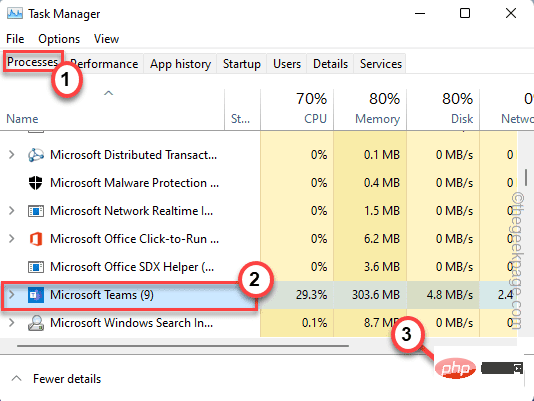
Make sure that any unnecessary processes are not using a lot of CPU processing power.
Close Task Manager when finished. Now, play games or do anything. You will no longer see the processor thermal trip error message.
Fix 3 Run a malware scan
There are some malwares like Crypto Mining Trojans that can overload the CPU and cause the entire system to crash! We recommend running a full scan using Windows Security Center.
1. Use the Start menu to launch the Windows Security application.
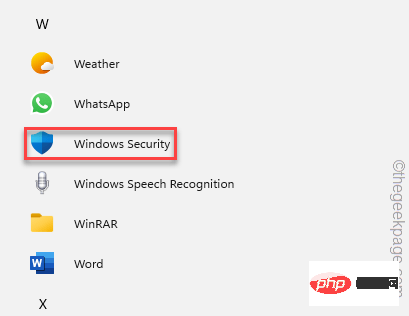
2. When the Windows Security page opens, click on the "Virus & Threat Protection" setting.
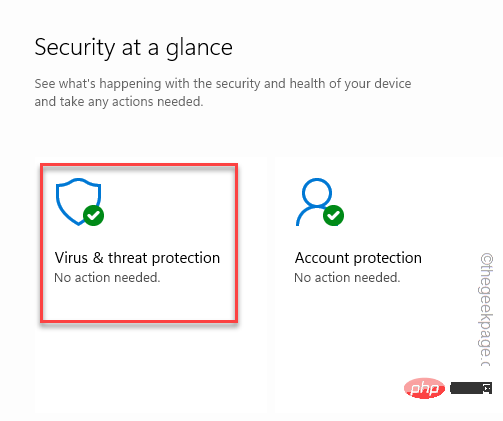
#3. On the next page, you will see the results of previous scans and more options.
4. Here, just click on "Scan Options" to access it.
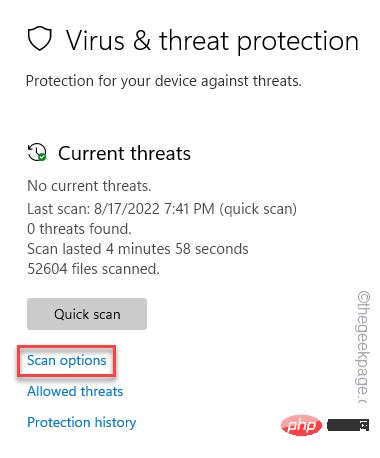
7. Now, select "Full Scan" and click on the "Scan Now" button to run a complete system-wide scan .

The scan time may vary depending on the number of files and folders you have.
If Windows Security Center detects any malware infection, you may have to restart your system so that Windows can quarantine and permanently remove it.
Hope this helps.
Fix 4 – Disable overclocking function
Overclocking also means overheating. If you have enabled it, disable it.
1. Press the Win key and I key simultaneously.
2. When the settings window opens, click "System".
3. After that, scroll and click on "Restore".

#4. Later, click "Restart Now" in the Advanced Startup section.
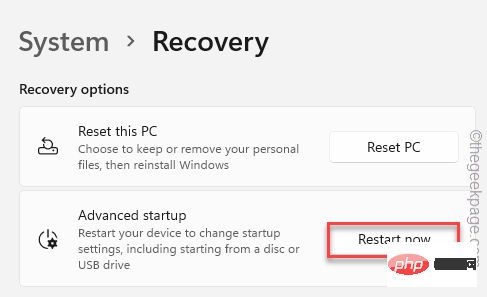
This will reboot the system.
5. Just click "Troubleshoot" to continue.
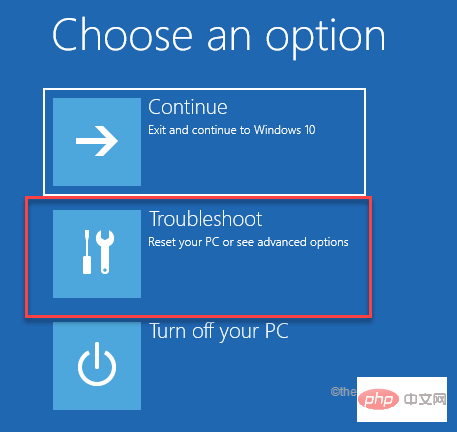
6. Next, just click on “Advanced Options” to enter the next settings page.
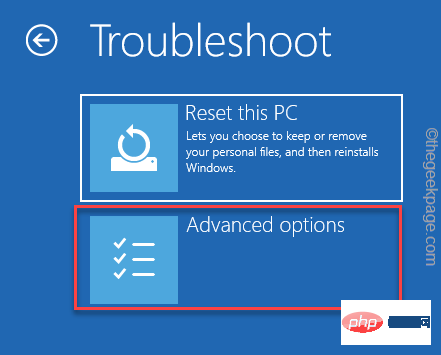
7. You have to click on “UEFI Firmware Settings”.
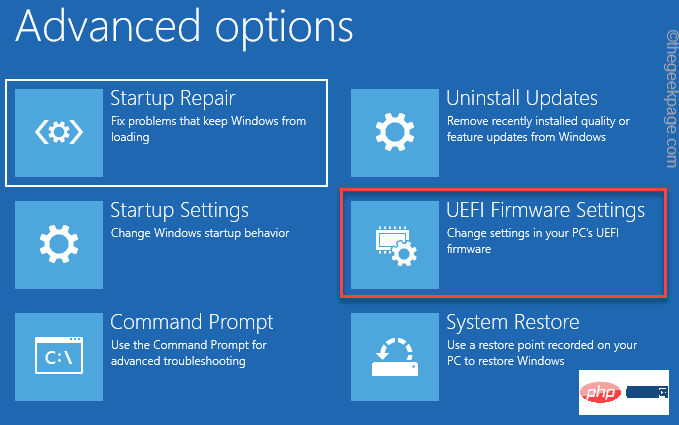
8. Now, click " Restart " to restart the system and open the BIOS settings.

9. Now, go to the "Performance" tab.
10.Here, look for the “Overclocking” option. Select it and set it to "Disable" mode.
Now, save the settings and exit the BIOS page.
11. Return to the homepage and click "Continue".
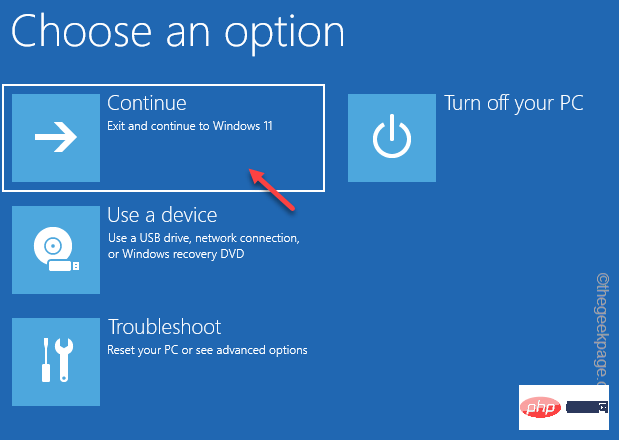
Once the system boots up, you won't have thermal trip issues at all.
Fix 5 – Check CPU Temperature
Ideally, the CPU operates within a defined temperature range. Check the temperature reading yourself.
For PC computers, the idle CPU temperature is 49°C and the maximum temperature should be around 79°C. In the case of laptops, the higher range can reach 90°C.
1. Visit the CoreTemp website.
2. Now, click "Download" to download the CoreTemp installer.

3. Then, double-click " Core-Temp-setup" to access it.
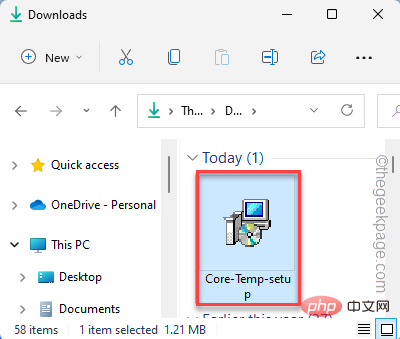
#4. Now, just follow the on-screen instructions to complete the last step.
5. Then, click "Install" to start installing the tool.
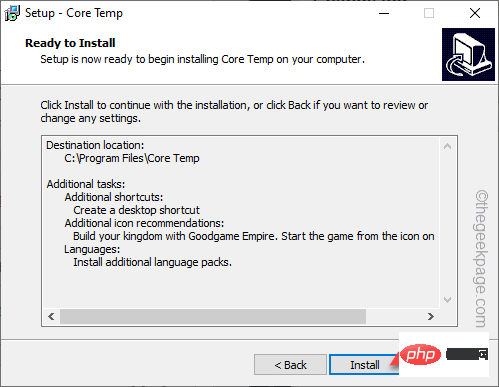
Come to the completion step, click "Complete" to complete the step.
CoreTemp should start automatically. If not, start the tool.
1. Once CoreTemp is turned on, check the temperature and load of each core.
2. If you find that the maximum temperature exceeds 65°C, despite applying all the fixes on this page, you should consult a technician.
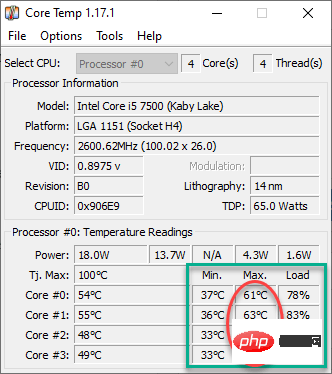
Fix 6 – Set a high-performance power plan
You can set the system power plan to high-performance mode.
1. First, press the Windows key and R key at the same time.
2. Then, Type it and click "OK".
电源配置文件
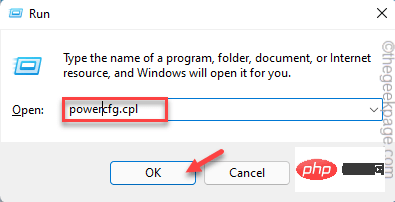
3. When the control panel opens, click "Show additional plans".
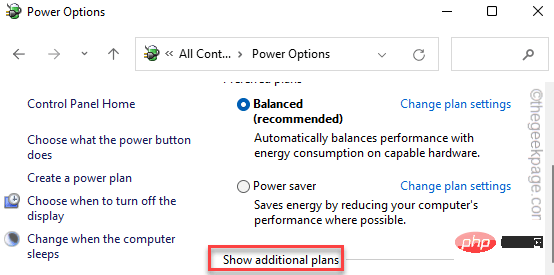
4. After that, select the "High Performance" mode.
[
Note – There is an additional option to use the “ Ulitmate Performance ” mode if desired. To enable this hidden power plan on your system, follow the steps mentioned in our tutorial.
]
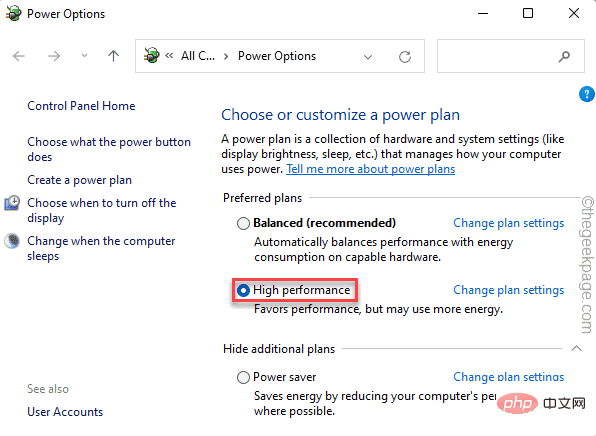
You can close the control panel page. Now, play the game and test it out. Your system will no longer trip due to heat.
Additional Tips–
1. You should increase your system RAM. If you have 4 GB, you should upgrade it to 8 GB.
2. You should replace the thermal paste on the heat sink. It can significantly reduce CPU temperature. Typically, thermal paste lasts 3 years. So if your PC is older than this, call a technician or you can reapply thermal paste yourself.
The above is the detailed content of How to Fix Thermal Trip Error on Windows 11/10. For more information, please follow other related articles on the PHP Chinese website!

Hot AI Tools

Undresser.AI Undress
AI-powered app for creating realistic nude photos

AI Clothes Remover
Online AI tool for removing clothes from photos.

Undress AI Tool
Undress images for free

Clothoff.io
AI clothes remover

AI Hentai Generator
Generate AI Hentai for free.

Hot Article

Hot Tools

Notepad++7.3.1
Easy-to-use and free code editor

SublimeText3 Chinese version
Chinese version, very easy to use

Zend Studio 13.0.1
Powerful PHP integrated development environment

Dreamweaver CS6
Visual web development tools

SublimeText3 Mac version
God-level code editing software (SublimeText3)

Hot Topics
 How to fine-tune deepseek locally
Feb 19, 2025 pm 05:21 PM
How to fine-tune deepseek locally
Feb 19, 2025 pm 05:21 PM
Local fine-tuning of DeepSeek class models faces the challenge of insufficient computing resources and expertise. To address these challenges, the following strategies can be adopted: Model quantization: convert model parameters into low-precision integers, reducing memory footprint. Use smaller models: Select a pretrained model with smaller parameters for easier local fine-tuning. Data selection and preprocessing: Select high-quality data and perform appropriate preprocessing to avoid poor data quality affecting model effectiveness. Batch training: For large data sets, load data in batches for training to avoid memory overflow. Acceleration with GPU: Use independent graphics cards to accelerate the training process and shorten the training time.
 deepseek image generation tutorial
Feb 19, 2025 pm 04:15 PM
deepseek image generation tutorial
Feb 19, 2025 pm 04:15 PM
DeepSeek: A powerful AI image generation tool! DeepSeek itself is not an image generation tool, but its powerful core technology provides underlying support for many AI painting tools. Want to know how to use DeepSeek to generate images indirectly? Please continue reading! Generate images with DeepSeek-based AI tools: The following steps will guide you to use these tools: Launch the AI Painting Tool: Search and open a DeepSeek-based AI Painting Tool (for example, search "Simple AI"). Select the drawing mode: select "AI Drawing" or similar function, and select the image type according to your needs, such as "Anime Avatar", "Landscape"
 Pi Node Teaching: What is a Pi Node? How to install and set up Pi Node?
Mar 05, 2025 pm 05:57 PM
Pi Node Teaching: What is a Pi Node? How to install and set up Pi Node?
Mar 05, 2025 pm 05:57 PM
Detailed explanation and installation guide for PiNetwork nodes This article will introduce the PiNetwork ecosystem in detail - Pi nodes, a key role in the PiNetwork ecosystem, and provide complete steps for installation and configuration. After the launch of the PiNetwork blockchain test network, Pi nodes have become an important part of many pioneers actively participating in the testing, preparing for the upcoming main network release. If you don’t know PiNetwork yet, please refer to what is Picoin? What is the price for listing? Pi usage, mining and security analysis. What is PiNetwork? The PiNetwork project started in 2019 and owns its exclusive cryptocurrency Pi Coin. The project aims to create a one that everyone can participate
 How to ask deepseek
Feb 19, 2025 pm 04:39 PM
How to ask deepseek
Feb 19, 2025 pm 04:39 PM
The search accuracy of DeepSeek depends on the way of asking questions. To achieve ideal results, the question should contain the following key elements: Clear topic: Specific specified information objectives. Specific angles: Cut into the topic from a specific perspective. Expected output form: define the desired result type (summary, analysis, list, etc.).
 How to download deepseek
Feb 19, 2025 pm 05:45 PM
How to download deepseek
Feb 19, 2025 pm 05:45 PM
Make sure to access official website downloads and carefully check the domain name and website design. After downloading, scan the file. Read the protocol during installation and avoid the system disk when installing. Test the function and contact customer service to solve the problem. Update the version regularly to ensure the security and stability of the software.
 How to use deepseek
Feb 19, 2025 pm 04:45 PM
How to use deepseek
Feb 19, 2025 pm 04:45 PM
DeepSeek is an efficient data search and analysis tool with an indexing mechanism at its core. Factors that affect their efficiency include: data type, data size, search strategy, and DeepSeek performance. High-quality data, refined search queries and sufficient computing resources are essential to optimize search results.
 How to adjust Sesame Open Exchange into Chinese
Mar 04, 2025 pm 11:51 PM
How to adjust Sesame Open Exchange into Chinese
Mar 04, 2025 pm 11:51 PM
How to adjust Sesame Open Exchange to Chinese? This tutorial covers detailed steps on computers and Android mobile phones, from preliminary preparation to operational processes, and then to solving common problems, helping you easily switch the Sesame Open Exchange interface to Chinese and quickly get started with the trading platform.
 Ouyi Exchange Download Official Portal
Feb 21, 2025 pm 07:51 PM
Ouyi Exchange Download Official Portal
Feb 21, 2025 pm 07:51 PM
Ouyi, also known as OKX, is a world-leading cryptocurrency trading platform. The article provides a download portal for Ouyi's official installation package, which facilitates users to install Ouyi client on different devices. This installation package supports Windows, Mac, Android and iOS systems. Users can choose the corresponding version to download according to their device type. After the installation is completed, users can register or log in to the Ouyi account, start trading cryptocurrencies and enjoy other services provided by the platform.





